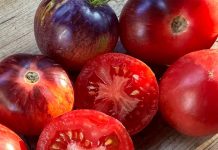The body is a funny fickle machine at times. Like a computer offered the wrong password, the body given too much of something, even a good thing, can simply respond with a big “NO” that lights up a pathway of pain.
It’s the body’s way of talking, but many of us refuse to hear the call. We are creatures of habit and so are our bodies, forming patterns conducted over and over again without much thought. And in our fast-paced, over-stimulating world of time constraints and multi-tasked days, we offer these rituals to our bodies in the many hours of neglect and oversight produced in our movements.
Simply growing older also puts repetitive stress on our bodies as we run, walk, sit, and bounce our way continuously through life.
Bursitis, the inflammation of the bursa which is the connective tissue structure surrounding a joint, can appear in the shoulders, elbows, knees, ankles, buttocks, hips, and thighs. With a lot of repetitive motion, these tissues can become irritated and inflamed–for instance, lifting something over your head repeatedly.
And it is not necessarily the curse of athletes. Even standing or sitting on hard surfaces for long periods of time over and over again can cause the bursa to cry out.
When confronted with the nagging pain of bursitis, watch your movements and postures you use everyday. It could be an elbow sitting on a hard surface each day or getting out of a car that puts unwanted pressure on certain muscles and joints.
Find ways to redistribute pressure on joints by moving around every so often or improving a situation such as stepping on a stool or ladder to reach something that is up too high.
Flexing and working the body in yoga and pilates keeps the connective tissues sinuous and helps the cells release the buildup of toxins. Low impact exercises like aqua aerobics is beneficial as well.
Foods are also a good way to reduce inflammation found in bursitis. Reworking the diet to include fresh greens (kale, spinach, and celery) juiced or eaten raw provides the body with anti-inflammatory benefits. Celery contains natural sodium that flushes out the system and cleans the cells of built up toxins.
Increasing antioxidants in the diet helps destroy free radicals and toxins that cause cell damage and inflammation. Kale, spinach as well as apricots, asparagus, beets, broccoli and cantaloupes all include carotenoids that help protect and repair cells from damage. Other free radical busters are vitamin E and C–walnuts, sunflower seeds, avocados, and mangos are rich in these benefits.
Ground flax seeds, and salmon, both high in omega-3s, are excellent food sources to help reduce inflammation. Pineapples and papayas contain bromelain and papain respectively that can also ease the pain and swelling from damaged tissues.
Filling the body with more alkaline producing foods benefits not only sore joints, but internal functions that keep the body healthy.
Reduce dairy and red meat. Avoid too much salt. Stay away from refined grains and starches sticking to whole grains, and foregoing the fast, processed food arena. Instead boost your meals by eating a good amount of foods raw. Raw also gives the body the needed reprieve from the burdens of digestion. This frees up energy for the body’s more important function of healing itself.
And drink plenty of fresh, pure water so the body and joints stay supple.




